Misunderstood Body Functions
G'day Team,
After chatting with a patient about how his esophagus hurt for half an hour, then realizing he meant his trachea, I thought I'd throw together a post on some common misunderstanding and small unknown facts about human anatomy and physiology.
You don't breath through your esophagus
Alrighty, so it all starts here. There are two pipes that travel from the back of your throat down to your body. Down the front we have the trachea, the pipe we breathe from. The trachea is hard and surrounded by cartilage. Behind the trachea, we have a muscular tube which pushes down food, called the esophagus.
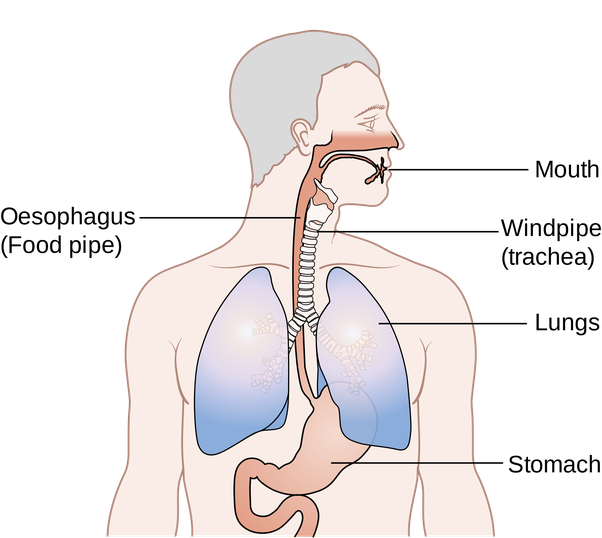
Image source
You can't change your blood pH
With all the fad diets floating around these days it was only a matter of time till someone said they were going to target the blood. Fortunately for us, our body already has an ingenious system for controlling the pH of our blood. For our body to function normally we have to maintain a pH of between 7.35 and 7.45. Now we don't do this just by fighting against the foods we eat, we actually have a smart "buffer" system which 'absorbs' the influence any molecules which may alter our blood pH.
Without getting into the science of it too much, we use bicarbonate (from the CO2 that our cells produce burning oxygen) in order to buffer our blood. The equation below can work in either direction and as such when too much acid enters our blood it's pushed to create a blood and visa versa for a base.
H2CO3 <-> HCO3- + H+
Your brain doesn't control all your movements
While our brain is probably the most important organ when it comes to controlling the movements we're aware of, our bodies movements often simply run on automatic too. We've all heard of reflexes, but did you know these movements are controlled in our spinal cord, not our brain.
A reflex occurs when input into a nerve elicits a response that we do not actively control. Now we all know about the large reflexes, like withdrawing from heat or pain, but reflexes control a lot of other small actions in our body too. These include digestive movements, regulation of blood pressure and balance. A lot of these are controlled in the spine, but in the stomach, they're also controlled in things like the myenteric plexus.
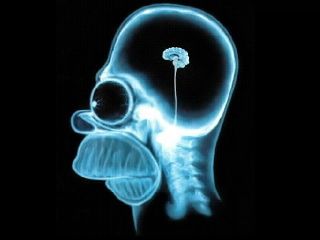
Image source
Deoxygenated blood isn't blue
At some point about 15 years ago someone decided to have the genius idea of referring to oxygenated blood as red and deoxygenated blood as blue.
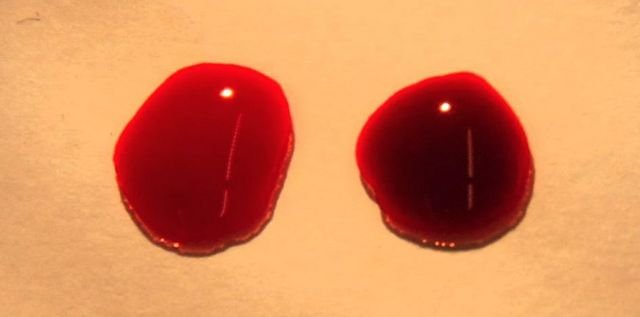
Image source
Now as you can see, blood is red. Blood with oxygen in it is a little brighter, but no blood is blue! This misconception may have come from the green-blue appearance of veins, a color they obtain because this is the wavelength that will filter through the skin.
Your ear and nose are connected from the inside
Ever wonder why yawning corrects the pressure in your ear when you're flying! The only reason that pressure builds up in the first place is that there's a small sealed off section behind the ear-drum (tympanic membrane). However, a narrow tube, called the eustachian tube, connects this area to the back of the internal nasal cavity near the throat, known as the nasopharynx.
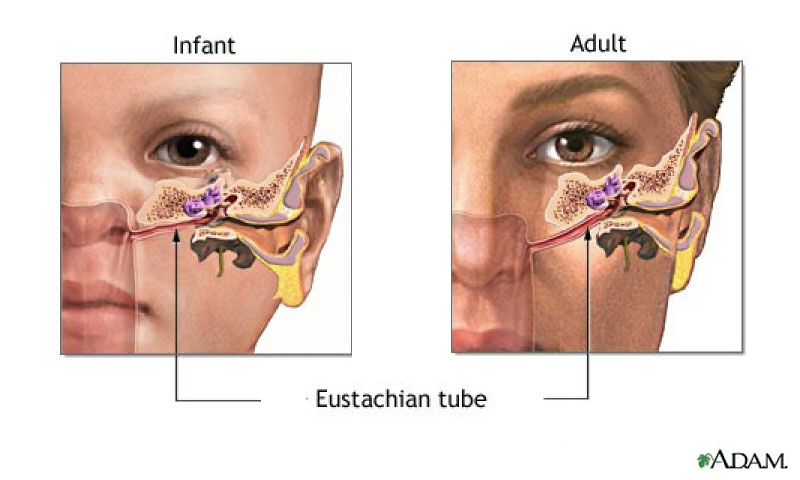
Image source
Now, this tube is much shorter and wider in children, which explains why they're so much more prone to ear infections, as bacteria can climb from the nose and mouth to the ear.
20/20 vision means you can see what a normal person can see
When we measure vision, we measure it using a simple bit of shorthand.
X/Y
Where X feet is the distance at which you can see, what a normal person can see at Y feet. 20/20 vision means you can see at 20m what a normal person can see at 20m. 10/20 means you have to be 10 feet away and using this we can say that 4/20 vision is very bad, but 20/10 vision is much better than normal...
You don't have 5 senses
While we often hear about our five senses (and the mysterious 6th sense) it's not regularly recognized that we already have a slew of other senses beyond the normal five. These include senses for things such as thirst, balance, hunger, proprioception (knowing where our body parts are without looking) and spacial-perception (where we are in a room for example). Now, these extra senses aren't conveniently linked with a part of our body, like seeing and hearing may be, but they are none the less vital to our everyday lives.
The penis doesn't get hard by squeezing a muscle
Sooooo, how many times have I heard people tell me that a penis gets hard because the muscles contract! No, no no! While it is true the penis is extremely muscular, and contraction of muscles allows us to somewhat control the movement of the penis, this is not the primary mechanism for an erection. The reason that an erection occurs is because it becomes engorged with blood. As we become aroused the blood flow to our penis (specifically the corpus cavernosum) increases and the veins which drain it close off, meaning it gets blown up like a balloon!
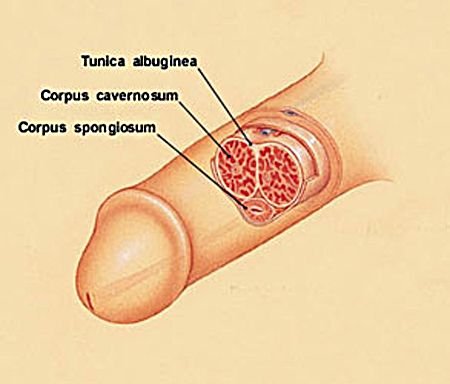
Image source
Your tongue doesn't have different taste sections
Now we all learned this in primary school! Different parts of our tongue taste different things... unfortunately it's all bulls@*#. Now this all stemmed from a misunderstanding of a paper published in 1901, and the myth has floated around for over 100 years now!
Adult teeth sit in your skull!
Now, this is something even I hadn't realized until someone told me! Those teeth that push out our baby teeth actually sit up in our skull before they come through! Take a look
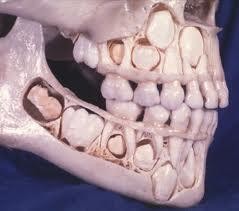
Image source
Thanks
Thanks for reading and I hope everyone learned something!
-tfc
My Recent Posts
Hi, I'm Tom! (My life of medicine, science and fantasy)
Exercising to Death - What is Rhabdomyolysis?
Metabolic Syndrome - What it is, and why it's KILLING US ALL!!!
Natures Best Mother - The Great Pacific Octopus
Basics of Reading an X-ray
Super Bugs - What is antibiotic resistance and how we are fighting it
Hydatidiform Mole – When Pregnancy Goes Wrong
Subconscious Discrimination - Test yourself using this Harvard University tool
Human Anatomy 101 - The Rotator Cuff
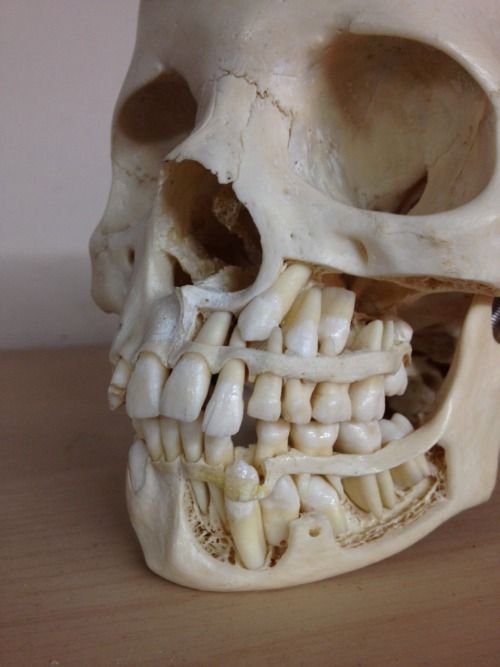
Fantastic info that people tends to misinterpret. It's good to have a doctor in the house. Thanks
Thanks very much!
Great information :)
Thanks for sharing @tfcoates!
Any time! If you've anything else you'd like to read about feel free to ask!
Non human blood is blue. - Not even those of the royals. xD
Invertebrates indeed do rely on a different oxygen carrier called Hemocyanin, which turns blue in its oxidized form. - Just adding some additional interesting facts. :)
Thanks for your cool post!
Best,
mountain.phil28
That's pretty cool, I didn't know about hemocyanin! I'd never heard of that! :) Love learning something enw!
This is just awesome and priceless information. i never knew that brain doesn't control all our movements and we can't change our blood pH
I was doing so well right until the end.....my dumb question of the day is....what fills the gap when the adult teeth drop and push the baby teeth out, and if the adult teeth are there already, what's the point in baby teeth ?
Thank you :-)
Hi nathen, I'll answer your question as best I can. But I'm no dentist :p...
So what fills the gap is bone, the teeth in the bone would usually be surrounded with cartilage and soft tissue and this would ossify.
As for why we have two set of teeth. It's quite common in nature for teeth to grow in sets, with one set pushing out the next in a continuous cycle. I guess for some reason humans only get that cycle once, and have to make do with our adults teeth for our whole lifes!
Great post! it's always great to have the pros fighting misinformation.
If you're interested in doing one, I'd really like to know a bit more on infant nutrition and how it differs from adults'
just throwing it out there, I'll keep an eye on your account.
Of course, I'll have a look in to it! I know a bit of the basics but it'd be useful to learn more :)
Another reason I thought could be cyanosis gives rise to bluish discoloration of the fingers, which might have lead to people wrongly assuming less oxygen means blue.
Yeah this could be true, you're right! Fun fact, central cyanosis can also lead to a dyscolouration of centrally supplied mucous membranes, such as under the eyes and tongue!
Yeah the tongue is a big differentiator between peripheral and central cyanosis xD
NEW ON STEEMIT @NITESHBANIYA
I WILL HELP YOU TO MAKE follower @NITESHBANIYA
Hello and welcome to the community. I followed you and would appreciate a follow back. I'm @REECHA looking forward to see more posts! Have a great day and have fun. Welcome!!!!!!!!!!@NITESHBANIYA
Please upvote, comment, resteem and follow @niteshbaniya
get back to back in touch for upvote
@REECHA
spamming posts in this way gets you flagged.....bye